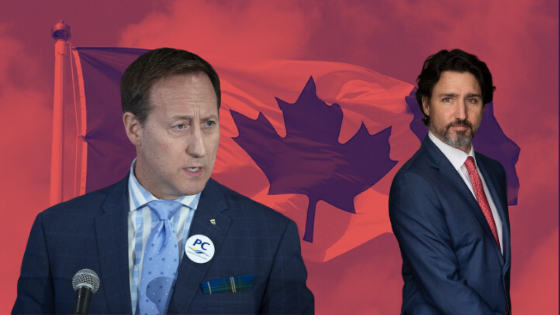Very well presented. Every quote was awesome and thanks for sharing the content. Keep sharing and keep motivating others.
Written By Ambrose Ralph, Posted on May 25, 2020

Recent polls indicate that if an election were called today, the Liberal Party would get 200 seats and hold an overwhelming majority in Parliament.
With the CPC in desperate need of leadership, yet it’s base at wits-end, it’s hard to see how the base stands united moving forward. Conservatives are too busy arguing over which candidate is not a liberal, as the threat of further division looms.
We have two federal conservative parties, and neither can take on the cult of Trudeau at present while conservatives have a knack for rebranding every so often, the Liberal Party. Liberals only have one shade of red.
While Trudeau is the author of many embarrassing mistakes, the party stands by his leadership, as a united front. Those who did not tow the company line faced disciplinary action were marginalized from party ranks, and eventually banished from caucus—case in point, Jody Wilson-Raybould and Jane Philpott.
While the goal is to defeat Trudeau and remain electable, unity is vital as not to say whose conservative beliefs are a better shade of blue and vice versa.
I define the Red Tory and Blue Liberal labels as slogans specifically designed to divide conservatives on social media. Slogans specifically designed to alienate conservatives.
If people are going to call Erin O’Toole a blue liberal and call Peter Mackay a red conservative, they might as well call Rona Ambrose, Jason Kenney, and Michelle Rempel liberals too.
They formed government together and voted the same, in opposition to the Liberal Party of Canada. Under Steven Harper, the two front runners in this race voted Conservative with all of the other prominent and popular conservatives in Parliament.
For Western Separatists, would you instead negotiate an exit with Trudeau or a Conservative government? While the Wild Rose Independence Party shows promise, Albertans can’t wait until 2024.
We have depleted our savings, businesses are drowning in debt, and Alberta is struggling to recover its footing. As an Albertan patriot, I understand that her people are hurting.
But the jury is out as to who can beat Trudeau. Who can hold the current 121 Conservative seats and add 49 more to form a majority government?
Let’s look at this race from a different perspective. An angle that does not look at specific platforms, performances, or policies.
Alberta and Saskatchewan have no more seats to give. BC, Manitoba and the north may add to the seat total; however, the recent federal election was called before the votes were tallied in Manitoba. And, with the conundrum of Québec forever a puzzle Conservatives may never solve, considerable gains need to be made elsewhere. A total of 49 seats.
In the 2019 election, Trudeau recorded 79 liberal seats in Ontario, while Scheer received 36.
According to the latest polling from MainStreet Media, Peter Mackay is holding a 6-point lead over O’Toole in Ontario amongst decided conservative voters. He is projected to win 40 per cent of the first-ballot votes.
However, questions remain on whether he can secure enough support on the second ballot.
But what isn’t debatable is MacKay’s overwhelming support in Atlantic Canada. While they trust Conservatives from Ontario about as much as the West believes Trudeau, MacKay can break down the red Atlantic wall, which showed signs of dissolution in 2019.
Currently, the Liberals hold 26 out of a possible 32 seats in Atlantic Canada. But, as a region is known for its support of resource development and free trade historically, perhaps earning additional support is tenable.
At the onset of Confederation, Newfoundland and company were riled by support for separatism over many of the same reasons the West are: taxation without fair representation, economic autonomy, support for resource development (I.e., logging), etc.
But, as a “have not province” on the brink of bankruptcy, Trudeau’s anti Oil and Gas policies and his refusal to intervene on their behalf in ongoing court battles with Québec, who has overruled against a hydroelectricity line from Labrador through Quebec into the US, this theme seems all too familiar for Albertans.
PEI, New Brunswick and Nova Scotia all have resource-based economies that are hurting from Trudeau’s environmental policies.
Love him or hate him, the math shows that Peter MacKay has overwhelming support amongst Conservatives there and is the only person who can add seats and turn the tide (literally) in our favour.
And between Trudeau and MacKay, the choice is obvious. Though, it remains unknown whether can he can rally social conservatives or not, in light of his previous comments.
For a detailed breakdown of the next federal election, watch my video here.
Actually Sir John Thompson was from Nova Scotia and I believe he was Prime Minister. He is buried in Halifax cemetery.
Nova Scotia has had three Prime Ministers of Canada, Sir John Thompson, Sir Charles Tupper and Sir Robert Borden.
All 3 men were born in Nova Scotia and were Prine Minister’s of Canada. But all before Confederation was finalized. The writer may have been more clear and said modern day Canada has never has a Nova Scotia PM.